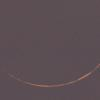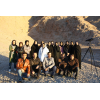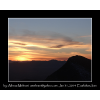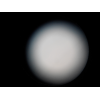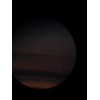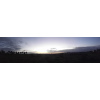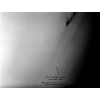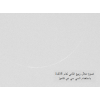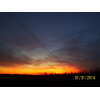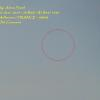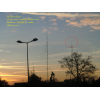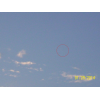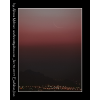Visibility of Rabee' Al-Aakher Crescent 1435 AH
- When to Observe Rabee' Al-Aakher Waxing (NEW) Crescent ?
- Rabee' Al-Aakher Waxing (NEW) Crescent Observation Results
- The OFFICIAL First Day in Different Countries
- When to Observe Rabee' Al-Awwal Waning (OLD) Crescent ?
- Rabee' Al-Awwal Waning (OLD) Crescent Observation Results
When to Observe Rabee' Al-Aakher Waxing (NEW) Crescent ?
The geocentric conjunction (Geocentric New Moon) will occur Inshalla on (Thursday 30 January 2014) at 21:39 UT.
Sighting the new crescent on (Thursday 30 January 2014) and (Friday 31 January 2014) is shown in the below graphs using the program Accurate Times by Mohammad Odeh according to Odeh criterion. Where:-
- It is impossible to see the crescent from the areas located under the red color. Because either the Moon on this day sets before the Sunset and/or the topocentric conjunction occurs after the Sunset.
- The crescent is expected to be seen by optical aid only from the areas located under the blue color.
- The crescent is expected to be seen by optical aid from the areas located under the magenta color. In these areas the crescent could be seen by naked eye if the atmospheric conditions are superb and the observer is experienced.
- The crescent is expected to be easily visible by naked eye from the areas located under the green color.
- The crescent cannot be seen from uncolored areas, even though the Moon sets in these locations after the Sunset and the topocentric conjunction occurs before the Sunset, but the Moon is not sufficiently illuminated in order to be seen as crescent even by optical aid.
- Kindly notice that the below graph shows the possibility of seeing the crescent from areas between 60 degrees north of Equator down to 60 degrees south of Equator.
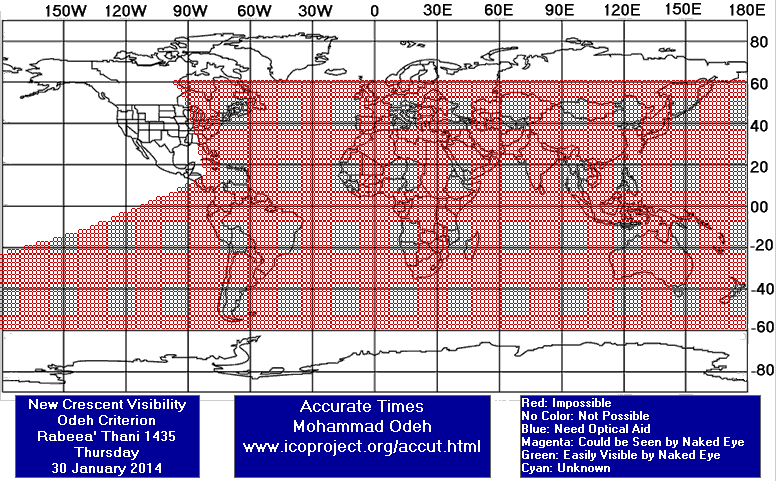

According to the Universal Hejric Calendar (UHC), which is based on the calculated crescent visibility, the start of this month in the Eastern Region will be on Saturday 01 February 2014 and in the Western Region will be on Saturday 01 February 2014. Kindly notice that the UHC is a pre-calculated calendar, which adopts a certain criterion to start the new Hejric month. Your country/organization might adopt different criterion to start the new Hejric month. So it is highly advised to read the UHC website before giving any judgment.
- Results of seeing the crescent, and the first day of the month in different countries will be added here Inshalla as we receive the reports from ICOP's members. If you wish to be a member in ICOP, or to know more about it, kindly click here.
Rabee' Al-Aakher Waxing (NEW) Crescent Observation Results
Fri 31 January 2014
Bangladesh
France
Germany
Eng. Gerhard Ahmad Kaufmann said: "After a sunny day the sun went down in a thick layer of haze and faint clouds over the horizon. The air was cold (4°C) but rather humid. Yet I could discover the very thin and faint 19-hour old crescent by binoculars about a quarter of an hour after sunset nearly directly above the sunset point. Mercury was also visible in the still bright sky. My son and me could continue to observe the crescent by binoculars for about ten minutes before it disappeared in the haze. An observation by naked eye proved very difficult, but by staring at the exact location, at one time I could discern a faint glimpse of it."
Eng. Martin Elsaesser said: "The sky was clear in the west but quite hazy. As the crescent was not to difficult i could easily see it with a telescope some time after sunset. I could also see it with a pair of 10x50 binoculars clear enough but not with the naked eye. I tried for some time but was not sure enough to have seen it with the naked eye. I also took some images through the telescope, which show the structure in the thin crescent. On image is unprocessed, the other has some contrast enhancement."
Indonesia
Mr. AR Sugeng Riyadi said: "We are from Assalaam Students' Astronomy Club, The Modern Boarding School tried to observe the new crescent of Rabi'ul Akhir 1435 AH on Friday, January 31, 2014. The weather was rainy and very hazy so we could not see the hilal. The 1st of Rabi'ul Akhir 1435 AH in Indonesia will start on Saturday, February 1, 2014 based on calculation..."
Iran
Mr. Hossein Janghorbani said: "In the name of God Rabeea’Thani Crescent Observation Report Astronomy and Geophysics Center of Shahreza – The Crescent Association of Shahreza Report by: Hossein Janghorbani (Najm-al-Sepehr) – Manager of Shahreza Crescent Association and Red Crescent’s Astronomy and Geophysics Center Date: Friday, 01/31/2014 Location: Damzad foothills in the East of Shahreza (latitude: 32 00 N, longitude: 51 52 E, elevation: 1825m from sea level, time zone: +3.5 GMT) Equipments: two sets of 15*70, 7*42 & 7*35 binoculars, three sets of 20*90 binoculars, one 30*60 binocular, one compass. Atmospheric condition: hazy and partly cloudy in western horizon. Horizon obstacles: about 2° Apparent sunset: 17:24 Apparent moonset: 18:09 Results: Moon crescent was seen by 20*90 binoculars by Mahsa Khaje at 18:00 between dust and clouds, for the first time. Other group members observed crescent by binoculars subsequently. Crescent observed by Hossein Janghorbani and Mohadese Alinejad at 18:09 by naked eye. Observers: 1- Mohammad Hossein Sahba 2- Javad Amiri 3- Ehsan Alinejad 4- Hossein Janghorbani 5-Ali Janghorbani 6- Mohammad Javad Nikeghbal 7- Shahram Rahmati 8- Majid Heydari 9- Tayebe Shafie 10- Raziye Aligholi 11- Talat Taheri 12- Roshanak Sahba 13- Saghar Sahba 14- Saba Sahba 15- Mahsa Khaje 16- Zahra Farrokhpour 17- Zeynab Ghermezi 18- Mohadese Alinejad 19- Nazanin Piroozmandan 20- Ghazaal Janghorban 21- Fateme Izadi 22- Maryam Shahcheraghi 23- Maede Imanpour 24- Giti Mohammadinejad 25- Roya Ghermezi "
Mr. Alireza Mehrani said: "New Moon = = = = = = Location: Esfahan, Iran Latitude: 32° 35' 26.78" N Longitude: 51° 38' 14.36" E Elevation: 2080 meters from sea level Time zone: +3.5 Observer & photographer: Alireza Mehrani Date: Friday January 31, 2014 (Bahman 11, 1392-Iranian Calendar) Temperature: 12C° Wind: 7.2 km/h Humidity: 22% Barometer: 842.2 mb Visibility: 12 km Topocentric and local time values from "Moon Calculator" (Refrac off): Crescent first observation through 15x80 binoculars: Time: 17:49 LT (14:19 UT) Moon Alt: 6° 14' 18" Sun Alt: - (3° 34' 42") Elongation: 9° 57' 18" Rel Azi: 1° 39' 23" Moon Width: 0.25' Moon Phase: 0.91% Moon Age: 16h 41m after conjunction "
Iraq
Dr. AbdulSattar M. Khidhir said: "تمت رؤية الهلال بوساطة التلسكوب الكاسر نوع MEADE ETX-70AT الذي تم توجيهه يدويا دون الاستعانة بالتوجيه الالي له وذلك من قبل فريق مكون من 8 اشخاص "
Libya
Morocco
Dr. Hassan Talibi said: "أظن أن سبب عدم الرؤية هو وجود غيوم في المكان الذي يوجد فيه الهلال والله أعلم. تم الإعلان الرسمي من وزارة الأوقاف عن رؤية الهلال."
Nigeria
Dr. Z.Sani Mustapha said: "Today is the 30th day of Rabiu Awwal and first day of Rabiu Thani"
Dr. Usman El-Nafaty said: "The sky was cloudy and hazy at sunset. An attempt to sight the hilal was nevertheless made but all the same it was not seen. "
Dr. Z.Sani Mustapha said: "Crescent is not seen. It cannot be seen since it is cloudy and falls in the magenta zone. It will certainly be seen tomorrow 1/2/2014"
Oman
Prof. Mohammed Al-Bussaidi said: "They was alot of clouds, sometimes very dark clouds. However, at certain times we had less dense clouds (whitish) passing by and through this small window we managed ro sight the crescent using a telescope + CCD."
Eng. Ammar Salim Al-Rawahi said: "لله الحمد لقد تمت رؤية الهلال من رغم وجود سحب متفرقة حيث استطعنا من رؤيته في أحد الأجزاء الخالية من السحب."
Saudi Arabia
Mr. Saleh Al-Saab said: "Below in a photo for the crescent seen by ICOP member Ibrahim Alolayan from Shaqra by CCD imaging."
South Africa
Sri Lanka
Mr. Nular Bary said: " Assalamualaikum W. R. B. Today 29th.Rabi-al Awwal 1435H (31/01/2014) evening the Colombo western sky was partly cloudy and I couldn't trace a thing even with my binocular till 6:50pm. from 6:30pm as our Sunset was at 6:19pm. The Moon's age was 15h.10m. & sets at 6:49pm. Neither our Hilaal Committee didn't recieve any positive naked eye sighting from any parts of the Country till 7:55pm. Hence The Colombo Grand Mosque Hilaal Committee unanimously declared to complete the month of Rabi-al-Awwal with 30days and start the month of Rabi-al-Thani 1435H.on the 2nd. Sunday of February 2014 "In Sha Allah" Nular Bary Borella Colombo."
Tunisia
United Kingdom
Eng. Qamar Uddin said: "On Friday 31 January 2014, it was totally cloudy and raining in York and most of the UK. The Ulama have started the month of Rabiul Thani 1435 AH based on positive sighting reports from Morocco. Please see the ICOUK website, www.moonsighting.org.uk for more details."
United States
Dr. Javad Torabinejad said: "I arrived at my sighting location (the Blacksburg Middle School) about 5:50 pm EST (sunset: 5:45 pm). Using a pair of binoculars (7X50), I scanned the WSW horizon above where the sun had set. The horizon was partly cloudy and hazy. Because of the cloud cover, my first binocular sighting was at 6:23 pm when the crescent appeared in an opening. Quickly, the very thin crescent again disappeared behind the clouds. Later at 6:47 pm, the crescent reappeared in another opening where I could see it with the naked eye. At this time it was about 1.5 degrees above the horizon. The horns were at 4:30 and 7:30 O'clock (4:30;6:00;7:30). I left the site at 6:50 pm (moonset: 7:04 pm)."
The OFFICIAL First Day in Different Countries
Sat 01 February 2014
1 . Indonesia
2 . Iran
3 . Iraq
4 . Libya
5 . Morocco
6 . Nigeria
7 . Oman
8 . Tunisia
9 . United Kingdom
Sun 02 February 2014
1 . Bangladesh
2 . South Africa
3 . Sri Lanka
When to Observe Rabee' Al-Awwal Waning (OLD) Crescent ?
The geocentric conjunction (Geocentric New Moon) will occur Inshalla on ( Thursday 30 January 2014 ) at 21:39 UT.
Sighting the OLD crescent on ( Thursday 30 January 2014 ) and on ( Wednesday 29 January 2014 ) is shown in the below graphs using the program Accurate Times by Mohammad Odeh according to Odeh criterion. Where:-
- It is impossible to see the OLD crescent from the areas located under the red color. Because either the Moon on this day rises after the Sunrise and/or the topocentric conjunction occurs before the Sunrise.
- The crescent is expected to be seen by optical aid only from the areas located under the blue color.
- The crescent is expected to be seen by optical aid from the areas located under the magenta color.. In these areas the crescent could be seen by naked eye if the atmospheric conditions are superb and the observer is experienced.
- The crescent is expected to be easily visible by naked eye from the areas located under the green color.
- The crescent cannot be seen from uncolored areas, even though the Moon rises in these locations before the Sunrise and the topocentric conjunction occurs after the Sunrise, but the Moon is not sufficiently illuminated in order to be seen as crescent even by optical aid.
- Kindly notice that the below graph shows the possibility of seeing the crescent from areas between 60 degrees north of Equator down to 60 degrees south of Equator.

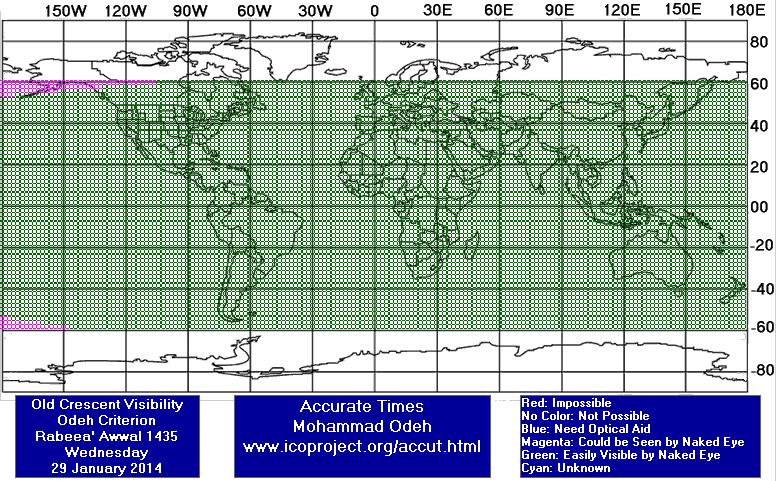
Rabee' Al-Awwal Waning (OLD) Crescent Observation Results
Wed 29 January 2014
France
Indonesia
Nigeria
United Kingdom
Eng. Qamar Uddin said: "The eastern horizon before sunrise was totally cloudy."
United States
Dr. Javad Torabinejad said: "Using a pair of binoculars (7X50), I sighted the crescent around 7:30 am EST followed by a naked eye sighting; the session was started too late."
Thu 30 January 2014
Indonesia
Mr. AR Sugeng Riyadi said: "On Thursday, Jan 30, 2014: The old crescent of Rabi'ul Awwal 1436 AH was NOT seen from my location (loc: -07.67375,110.75178) Bendo Ketitang Juwiring Klaten Central Java Indonesia, because the sky was cloudy. I just could see the sunrise."
Iran
Mr. Alireza Mehrani said: "New Moon = = = = = = Location: Esfahan, Iran Latitude: 32° 35' 41.44" N Longitude: 51° 38' 55.64" E Elevation: 1849 meters from sea level Time zone: +3.5 Observer & photographer: Alireza Mehrani Date: Thursday January 30, 2014 (Bahman 10, 1392-Iranian Calendar) Temperature: 1C° Wind: Calm Humidity: 80% Barometer: 846.6 mb Visibility: 10 km Topocentric and local time values from "Moon Calculator" (Refrac off) Crescent first observation through 15x80 binoculars: Time: 06:15 LT (02:45 UT) Moon Alt: 0° 36' 07" Sun Alt: - (9° 45' 38") Moon Phase: 1.16% Crescent first observation through naked eyes: Time: 06:26 LT (02:56 UT) Moon Alt: 2° 42' 06" Sun Alt: - (7° 31' 40") Moon Phase: 1.14% Crescent last observation through naked eyes & 15x80 binoculars: Time: 06:30 LT (03:00 UT) Moon Alt: 3° 27' 39" Sun Alt: - (6° 43' 11") Elongation: 11° 15' 37" Rel Azi: 4° 49' 12" Moon Width: 0.32' Moon Phase: 1.13% Moon Age: 18h 38m before conjunction "
